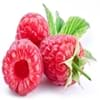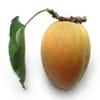Health Benefits
Cancer prevention, Heart care, Prevents macular degeneration, Reduces blood circulation problems
Cancer prevention, Cures gastro-intestinal troubles, Heart care, Increase in haemoglobin, Prevents high blood pressure
General Benefits
Anti-inflammatory properties, Controls blood sugar levels, Digestive aid, Eye care, Helps in weight loss
Anti-inflammatory properties, Boosts immune system, Digestive aid, Eye care, Flu treatment, Helps in weight loss, Maintains healthy cholesterol level, Treatment of common cold
Skin Benefits
Anti-aging benefits, Brightens and lightens complexion
Anti-aging benefits, Brightens and lightens complexion, Reduces wrinkles, Skin revitalization, Treatment of dark spots
Hair Benefits
Acts as moisturizer, Regulates hair growth, Shiny hair
Prevents hair loss, Promotes longer and healthier hair, Protects hair, Remedy for split ends, Treatment of dandruff
Allergy Symptoms
Breathing difficulty, Eczema, Hives, Itching, Nasal congestion, Runny nose, Sneezing, Watery eyes, Wheezing
Abdominal pains, Anaphylaxis, Vomiting
Side Effects
Allergic reaction
Allergic reaction
Best Time to Eat
Best if taken as a breakfast (or empty stomach), As a snack in the late afternoon, Don't eat after meal, Morning time (before lunch)
As a snack in the late afternoon, Don't consume at night and before bed, Don't eat after meal, Morning time (before lunch)
Vitamin B5 (Pantothenic Acid)
Vitamin C (Ascorbic Acid)
Vitamin K (Phyllochinone)
Phytosterol
Not Available
Calories in Fresh Fruit with Peel
Calories in Fresh Fruit without Peel
Not Available
Not Available
Varieties
Amity, August Red, Boyne, Canby, Caroline, Comet, Dinkum, Dorman Red, Latham, Meeker, Black Hawk, Hayda, Lauren, Meeker and Latham
Merryweather Damson, Shropshire Prune, President plum, Damson farleigh and Damson langley bullace
Color
Black, Purple, Red, Yellow
Dark purple
Taste
Sweet
Juicy, Sweet, Tart
Origin
Europe, North Asia
Syria
Soil Type
Sandy loam
Clay, Loam, Moist, Sandy loam, Well-drained
Climatic Conditions
Cold
Cold
Facts about
- There are more than 200 varieties of raspberries.
- In USA, 90% of the raspberries are grown in Washington, California and Oregon.
- They do not ripe after they are picked.
- A raspberry contain 100 to 120 seeds.
- The name Damson originates from the original name 'Damacus plum'.
- Damson wine was very popular in 19th century.
- This fruit is often used in jams due to its slightly tart behaviour.
Top Producer
Russia
United Kingdom
Other Countries
Azerbaijan, Canada, Mexico, Poland, Serbia, Spain, Ukraine, United Kingdom, United States of America
Ireland, United States of America
Top Importer
United States of America
United States of America
Top Exporter
Poland
France
Botanical Name
Rubus Idaeus
Prunus domestica subsp. insititia
Synonym
Not Available
Not Available
Subkingdom
Tracheobionta
Tracheobionta
Division
Magnoliophyta
Magnoliophyta
Class
Magnoliopsida
Magnoliopsida
Species
R. idaeus
Prunus domestica subsp. insititia
Generic Group
Rose
Not Available
Difference Between Raspberry and Damson
We might think that Raspberry and Damson are similar with respect to nutritional value and health benefits. But the nutrient content of both fruits is different. Raspberry and Damson Facts such as their taste, shape, color, and size are also distinct. The difference between Raspberry and Damson is explained here.
The amount of calories in 100 gm of fresh Raspberry and Damson with peel is 53.00 kcal and 46.00 kcal and the amount of calories without peel is Not Available and Not Available respectively. Thus, Raspberry and Damson belong to Low Calorie Fruits and Low Calorie Fruits category.These fruits might or might not differ with respect to their scientific classification. The order of Raspberry and Damson is Rosales and Rosales respectively. Raspberry belongs to Rosaceae family and Damson belongs to Rosaceae family. Raspberry belongs to Rubus genus of R. idaeus species and Damson belongs to Prunus genus of Prunus domestica subsp. insititia species. Beings plants, both fruits belong to Plantae Kingdom.









